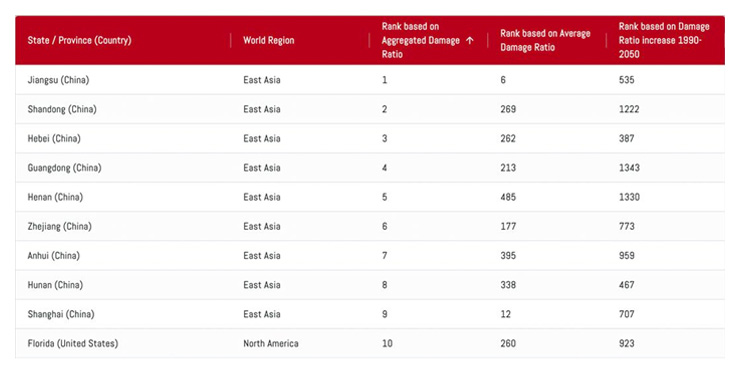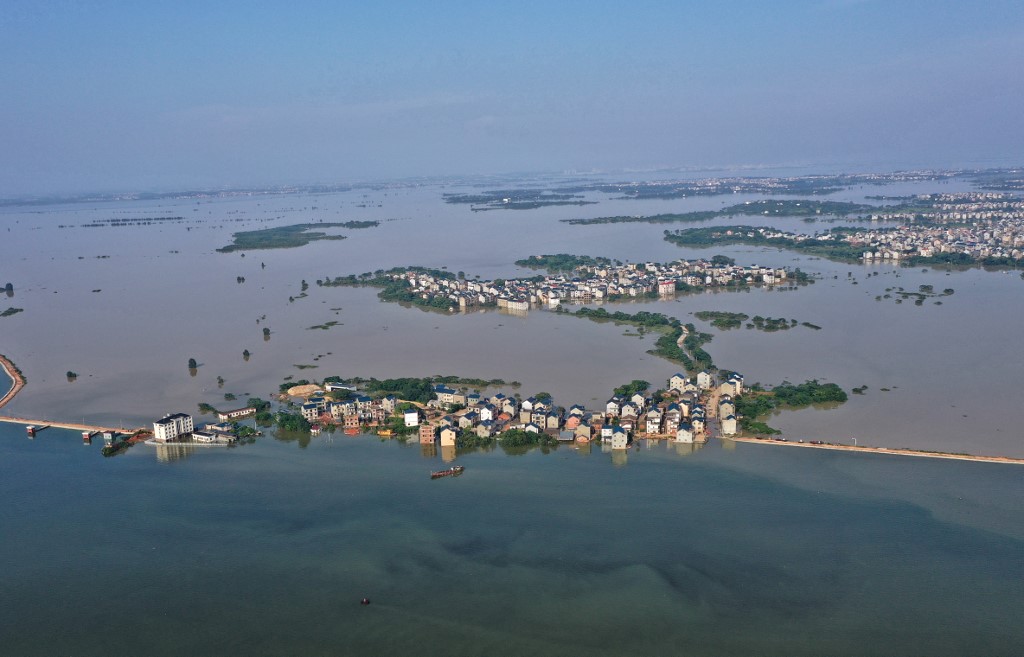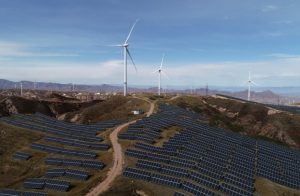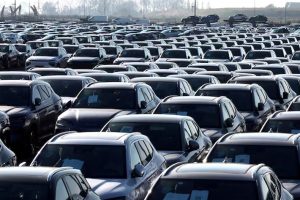Some of the world’s most important manufacturing hubs are at risk from rising water levels and extreme weather, as key Chinese provinces top vulnerability to climate change.
According to data published on Monday, China is home to 14 of the 15 global regions most vulnerable to climate change.
The industrialised Chinese coastal province of Jiangsu, which accounts for a tenth of China’s GDP, was ranked the world’s most vulnerable territory. It was followed by neighbouring Shandong and the major steel production base of Hebei. The flood-prone central province of Henan was fourth.
Also on AF: China Expecting Record Rise in Solar Power Capacity This Year
The data, released by climate risk specialists XDI, showed that some of the engine rooms of the global economy face catastrophic hazards such as rising sea levels, river flooding and wildfires.
The risks could depress property prices and deter investment, XDI said.
China’s Guangzhou “has been estimated to be ‘the most economically vulnerable city in the world’ to sea level rise by 2050,” XDI said in media release on Monday.
The climate risk analysis firm assessed more than 2,600 regions worldwide. It used climate models together with weather and environmental data to assess the economic damage that temperature rises could wreak by 2050.
The study is based on a 3-degree Celsius (5.4 Fahrenheit) increase in temperatures by the end of the century, under a scenario drawn up by the Intergovernmental Panel on Climate Change.
“It is crucial for companies, governments and investors to understand the financial and economic implications of physical climate risk and weigh this risk in their decision-making before these costs escalate beyond financial tipping points,” XDI chief executive Rohan Hamden said in the release.

‘Increased investment in vulnerable regions’
“We’re already feeling the significant impacts of weather events around the world, and they will only increase,” Hamden told reporters. “Finally, we just want to make sure that every investment decision is made in a climate-resilient way.”
The shift of global manufacturing to Asia has driven a substantial increase in infrastructure investment in already vulnerable regions throughout China, making it more susceptible to the impacts of climate change, Hamden said.
“Infrastructure investment has tended to be concentrated in areas that have traditionally been very high-risk – river deltas, coastal zones, and relatively flat areas,” he said.
The highest ranking non-Chinese region was Florida in 10th place, with California 19th and New York 46th. Nine territories from India were also in the top 50.
Overall, 41 Asian cities were in XDI’s global top 50 facing greatest climate risk.
While climate is likely to become increasingly decisive when it comes to determining the flow of capital, it remains to be seen whether it will deter investment in more vulnerable regions, XDI’s co-founder Karl Mallon said.
“There is a lot to be done to work out which areas in the world are potentially adaptable and defendable, and which are probably the areas we will see abandoned in due course,” he said.
- Reuters, with additional editing by Vishakha Saxena
NOTE: The headline on this report was amended on February 21, 2023.
Also read:
US and China Agree to Further Talks, to Boost Climate Finance
China Must Pay Up For Climate Damage, Says Germany
India, China Must Pay for Climate Damage: Island Nations
China Wants High-Tech Solutions for Climate Problems
























